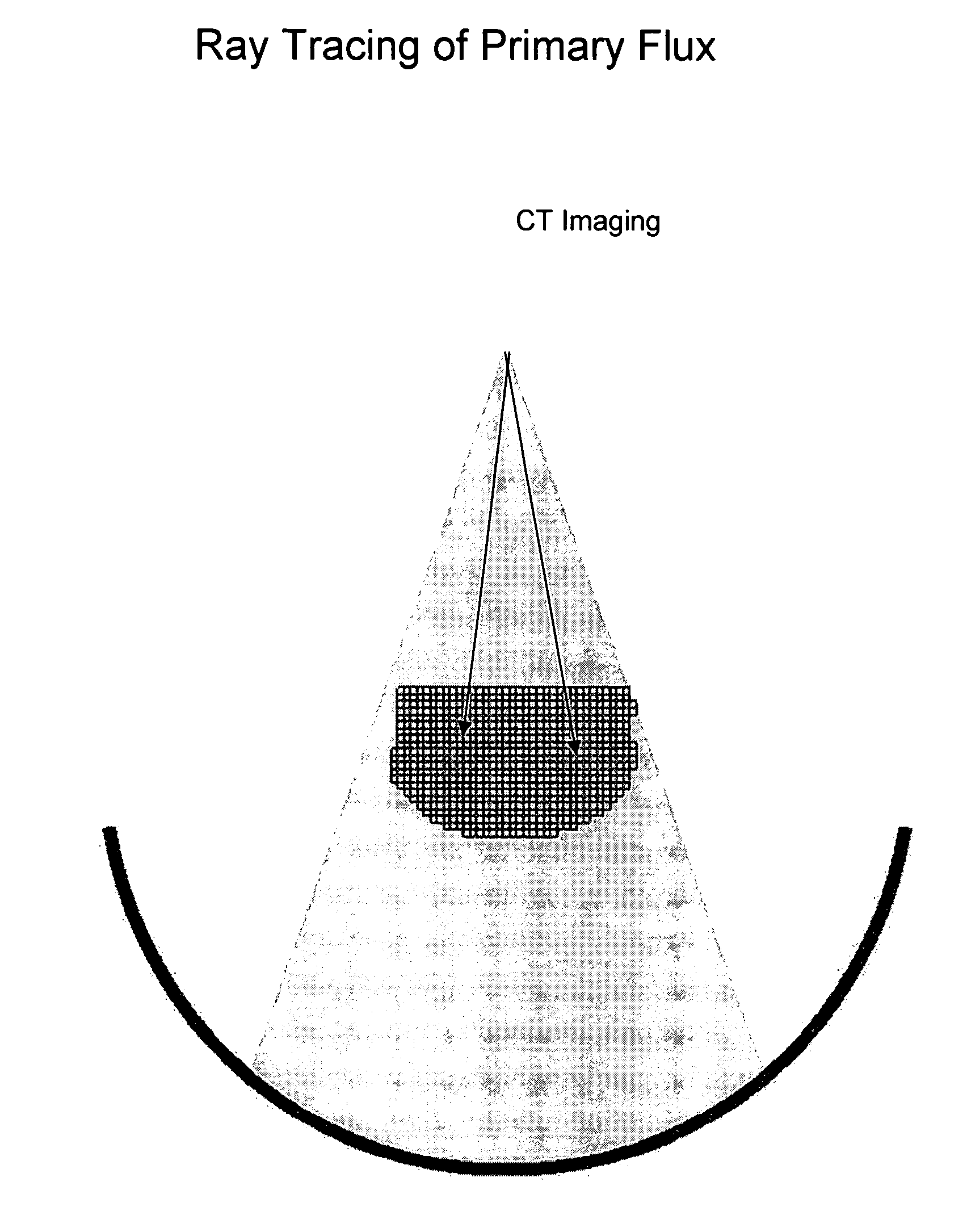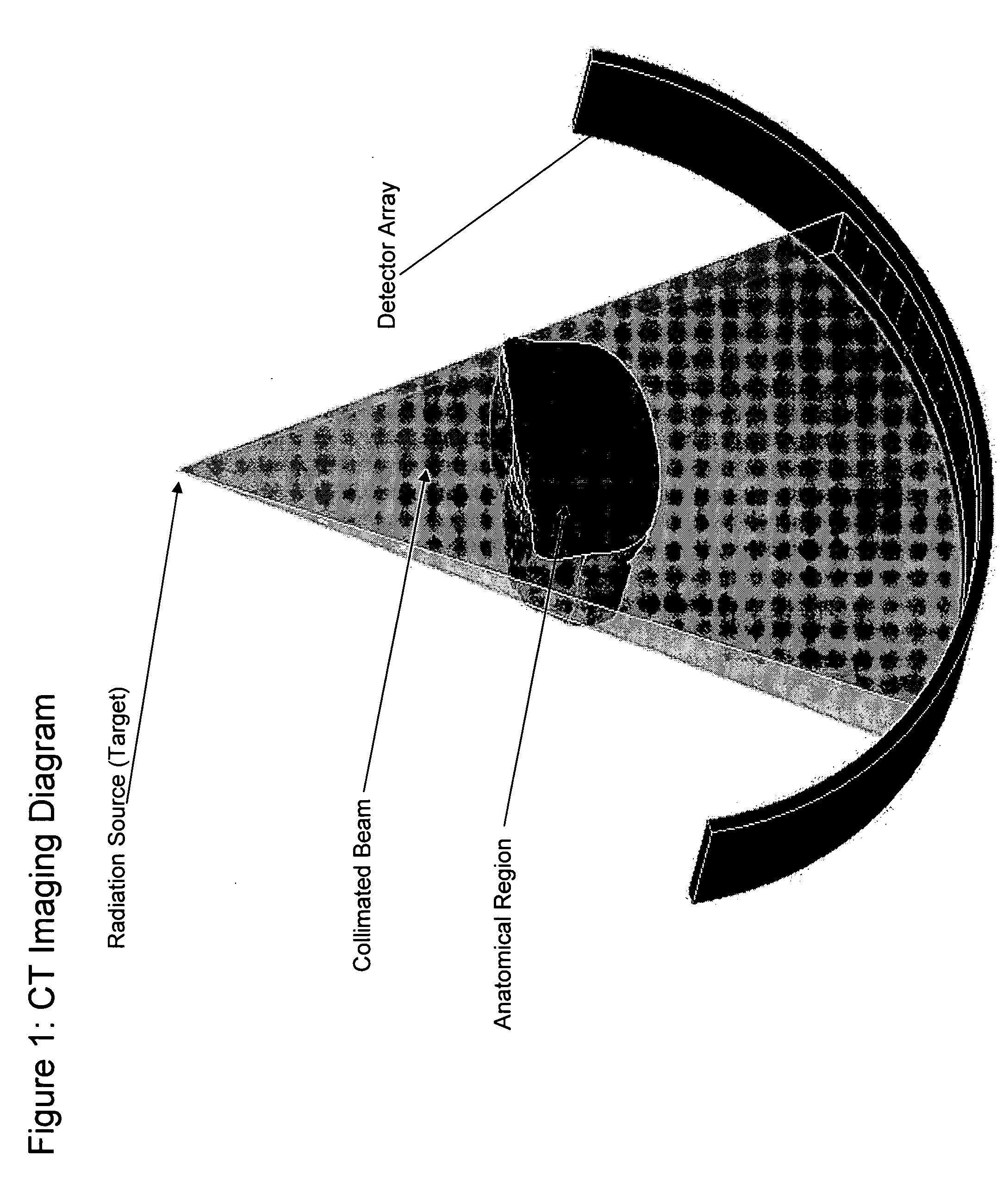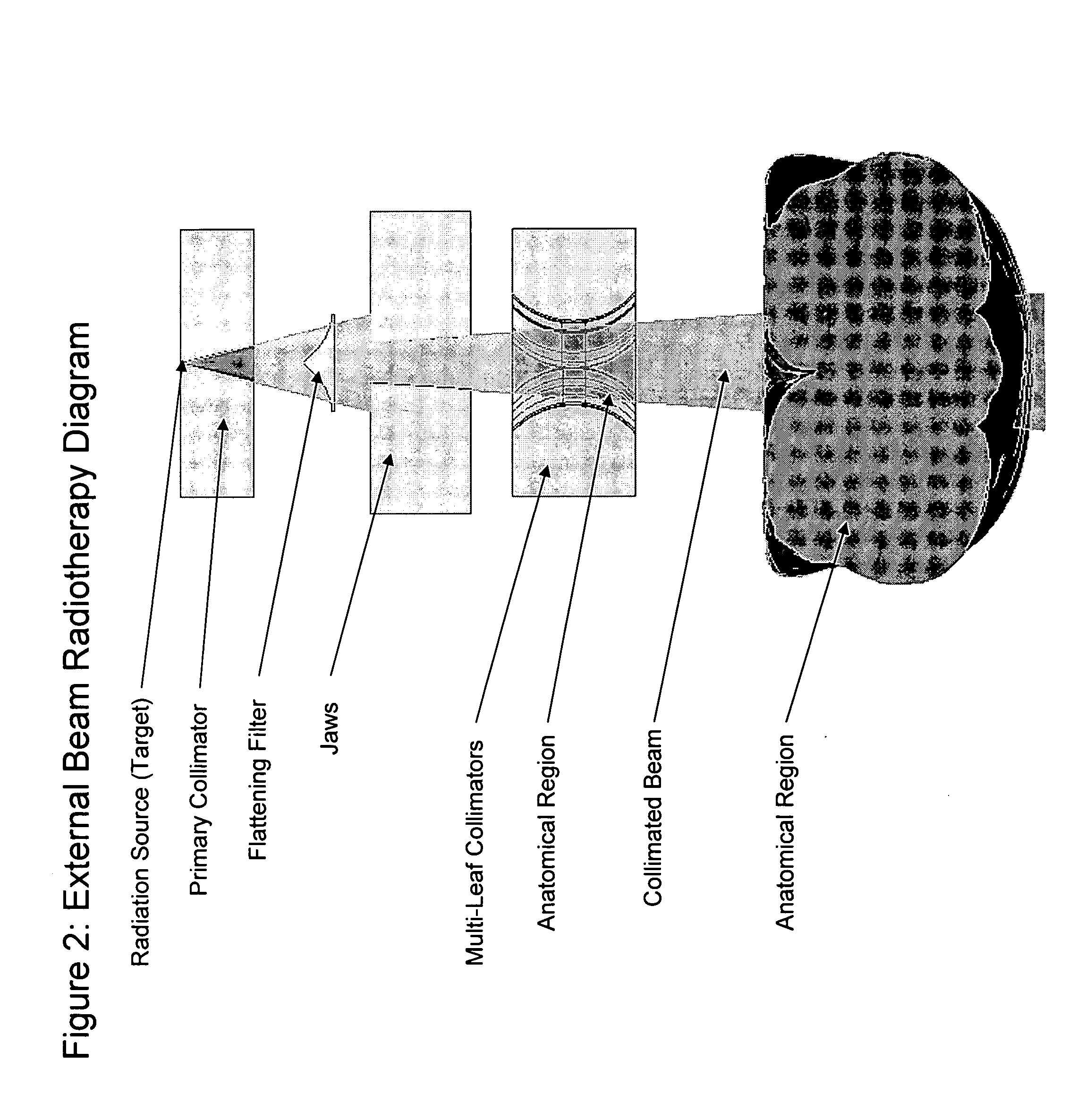Deterministic computation of radiation transport for radiotherapy dose calculations and scatter correction for image reconstruction
- Summary
- Abstract
- Description
- Claims
- Application Information
AI Technical Summary
Benefits of technology
Problems solved by technology
Method used
Image
Examples
Embodiment Construction
[0035] One method embodiment of the present invention is a process for using deterministic methods to calculate dose distributions resulting from radiotherapy treatments, diagnostic imaging, industrial imaging, and sterilization, and for calculating scattered radiation for the purposes of image reconstruction.
[0036] In one embodiment of the present invention, analytic ray tracing can be used to transport the primary, or uncollided, energy dependent flux from a source location into a computational grid, and from this determine the first-scattered distributed source for a deterministic transport calculation. In this context, transport calculation refers to a deterministic solution method which iteratively obtains the solution to the governing equations for radiation transport on the computational grid.
[0037] In certain embodiments of the present invention, Ray tracing of the primary flux is performed using a finer energy group structure than that used for a subsequent deterministic ...
PUM
 Login to View More
Login to View More Abstract
Description
Claims
Application Information
 Login to View More
Login to View More - R&D
- Intellectual Property
- Life Sciences
- Materials
- Tech Scout
- Unparalleled Data Quality
- Higher Quality Content
- 60% Fewer Hallucinations
Browse by: Latest US Patents, China's latest patents, Technical Efficacy Thesaurus, Application Domain, Technology Topic, Popular Technical Reports.
© 2025 PatSnap. All rights reserved.Legal|Privacy policy|Modern Slavery Act Transparency Statement|Sitemap|About US| Contact US: help@patsnap.com



